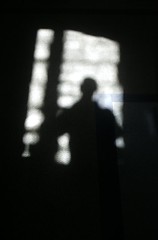The
Colossi of Memnon (known to locals as el-Colossat, or es-Salamat) are two massive stone statues of Pharaoh Amenhotep III. For the past 3400 years they have stood in the Theban necropolis, across the River Nile from the modern city of Luxor.
The Greek historian and geographer Strabo, writing in the early years of the 1st century AD, tells of an earthquake (in 27 BC) that shattered the northern colossus, collapsing it from the waist up. Following its rupture, this statue was then reputed to "sing" every morning at dawn: a light moaning or whistling, probably caused by rising temperatures and the evaporation of dew inside the porous rock. The legend of the "Vocal Memnon", the luck that hearing it was reputed to bring, and the reputation of the statue's oracular powers, travelled the length of the known world, and a constant stream of visitors, including several Roman Emperors, came to marvel at the statues. The mysterious vocalisations of the broken colossus ceased in 199 AD, however, when Emperor Septimius Severus, in an attempt to curry favour with the oracle, reassembled the two shattered halves.


0 Comments:
Post a Comment
<< Home